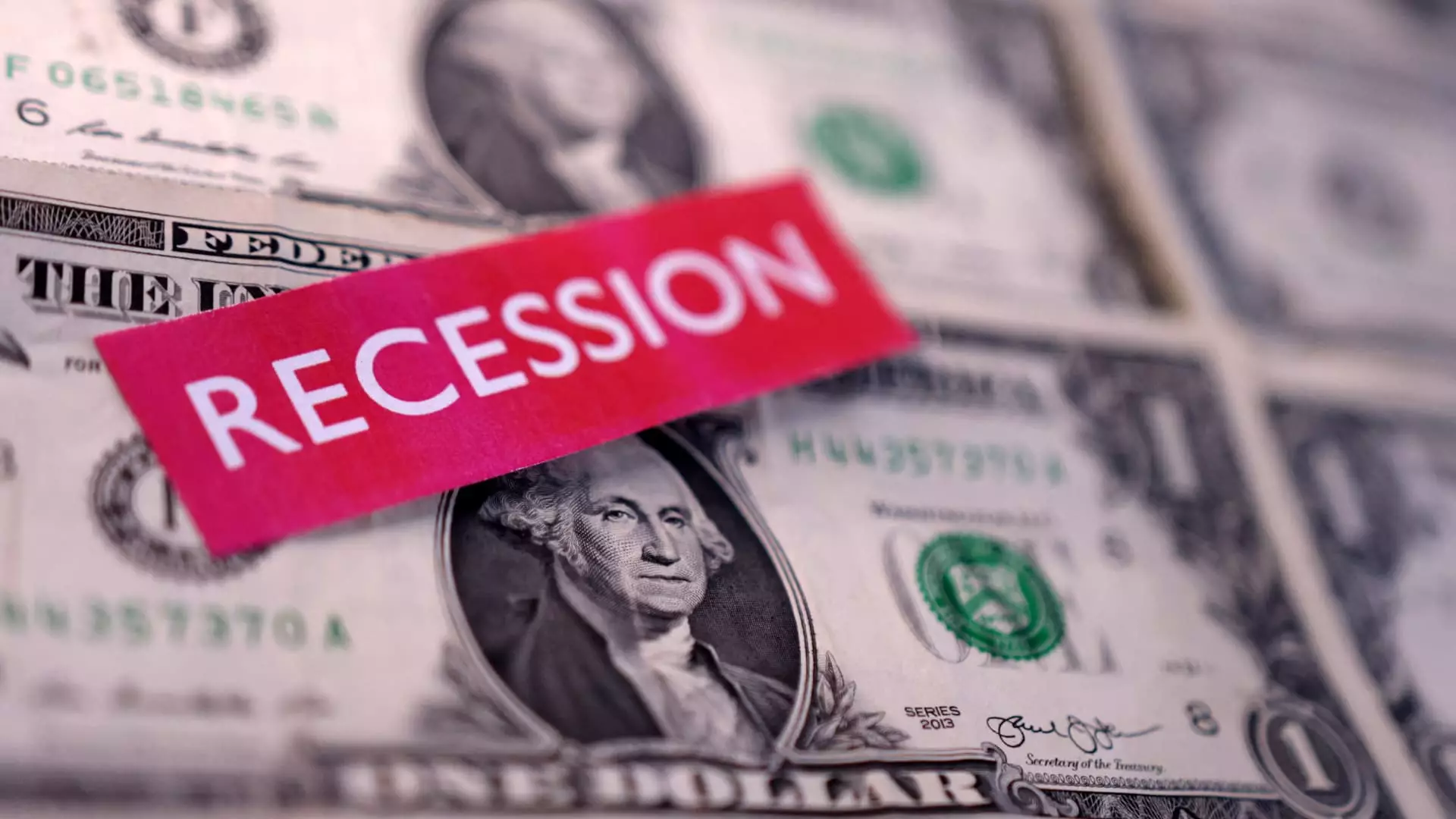In a landscape where economic stability is often regarded as a given, recent surveys have thrown the U.S. economy’s direction into disarray. A Deutsche Bank survey indicates that there’s nearly a 50-50 chance of entering a recession over the next 12 months, with a staggering 43% probability reported among 400 respondents. This figure isn’t just a number; it’s a wake-up call screaming into the void of complacency that has settled over markets and consumers alike. With citizens and business leaders increasingly gripped by the fear of downturns, the atmosphere is ripe for a crisis, even as unemployment rates remain low and growth continues, albeit at a sluggish pace.
The Federal Reserve’s Conundrum
Federal Reserve Chair Jerome Powell’s recent assertions affirm that the economy is “strong overall.” However, his optimistic rhetoric feels increasingly detached from the reality reflected in survey findings. After downgrading GDP growth estimates for this year to a meager annualized gain of 1.7%, many experts are beginning to question whether this is indicative of an economy living on borrowed time. In fact, if we exclude the pandemic’s economic hit in 2020, such sluggish growth would be traumatic—the worst we’ve seen since 2011. Coupled with a rising forecast for core inflation of 2.8%, which stalls well above the Fed’s long-term goal of 2%, the administration might soon find itself caught between a rock and a hard place.
The specter of stagflation—a mix of stagnant economic growth and persistent inflation—looms larger as concerns grow. Powell may deny the possibility of revisiting the dreadful economic conditions of the 1980s, but the truth is that it’s becoming increasingly difficult to dismiss the idea outright. History has a way of repeating itself, especially when policymakers ignore warning signs.
The Market’s Volatile Sentiment
With escalating uncertainty, market nervousness has become palpable. Notable figures like Jeffrey Gundlach pointed to a 50% to 60% likelihood of recession, a stark contrast to the Fiesta attitude of some policymakers. He notes that a series of tumultuous developments, including unpredictable tariff policies, have created an “uncertainty shock.” This apprehension has subsequently set off ripples throughout the equity markets, indicating that the fears aren’t just phantom worries but rooted in legitimate concerns that could materialize if current trends persist.
Morgan Stanley’s commentary on the matter reinforces the notion that the fear of stagflation is something we can no longer ignore. The mechanics behind this fear should concern not just economists, but every American who relies on the health of the economy. There’s a bit of irony here; while Powell remains optimistic, he must simultaneously acknowledge that the very foundation of our economic prosperity could be shaking—with inflation rising while growth stagnates.
A Call for Restrained Optimism
Interestingly, not all economists share Powell’s outlook. The analysts at Barclays have pointed to market-based measures, suggesting we may only be facing a modest slowing rather than an outright recession. However, even they acknowledge that a growth rate of 0.7% sits dangerously close to recession territory. In this precarious environment, complacency is a deadly sin. The UCLA Anderson forecasting center has issued its first-ever “recession watch,” a signal that even seasoned forecasters understand the gravity of our economic situation.
Clement Bohr, an economist from UCLA, cautions the Trump administration regarding trade policies. He warns that aggressive tariff actions could reignite recessionary triggers. It’s a peculiar paradox; what may be hailed as economic nationalism could paradoxically lead to a deeply ingrained recession—or worse, stagflation. His words serve not only as an analysis but as a forewarning: be careful what you wish for; your policies may indeed backfire and result in an economy suffering longer-term repercussions, perhaps even dragging us into another tale of malaise and stagnation.
Our economy stands before a precipice, one where unseen forces could swiftly reverse decades of progress. The dual threats of slowing growth coupled with rising inflation place the U.S. in a precarious position, forcing policymakers to tread carefully. American citizens deserve transparency and prudent governance to navigate this rocky terrain. Ignoring the call of the economic sirens may be tempting, but history has made clear that doing so often ends in tragedy.


Leave a Reply